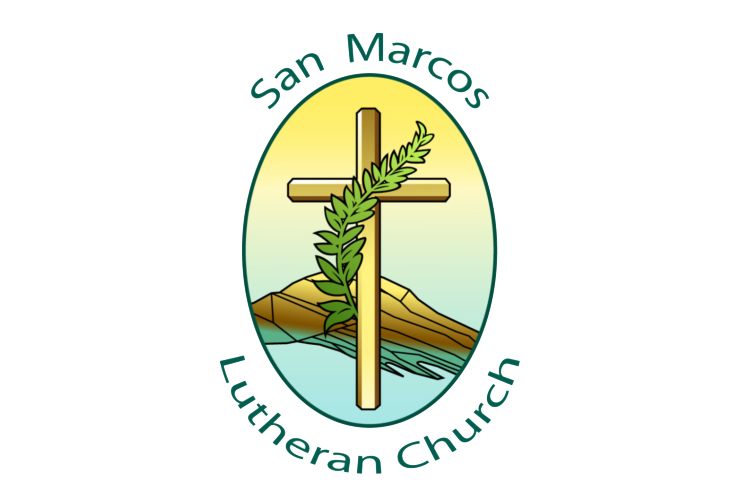Romans 3:28: For we hold that a person is justified by faith apart from the works prescribed by the law.
Ephesians 2:8-9 For by grace you have been saved through faith, and this is not your own doing; it is the gift of God — not the results of works, so that no one may boast.
Basic Lutheran Theology
SOLA FIDE, SOLA GRATIA, SOLA SCRIPTURA
The Lutheran “motto” that says our theology is based on faith alone, grace alone and scripture alone (as opposed to tradition or papal power).
SIMUL JUSTUS ET PECCATOR
The idea that we are simultaneously justified (debt-free) and sinful. We are justified (made debt-free) by grace (unconditional, undeserved love) through faith (a gift from God, not something to be earned).
This is a stand taken by Luther in reaction to the Roman idea that we are saved by works. Luther came to this realization as he was working on translating the book of Romans into German.
WE BELIEVE THAT SCRIPTURE IS THE INSPIRED WORD OF GOD
We believe that God’s word comes through scripture. However, as ELCA Lutherans, we do not add the words “infallible, inerrant”. We use “historical critical method” to try to understand the context in which the words were written as well as recognizing they were written in another language and have been translated from ancient manuscripts.
TWO SACRAMENTS — BAPTISM AND HOLY COMMUNION
A sacrament has three attributes:
- commanded by Jesus
- acts as a vehicle of God’s love and forgiveness
- involves earthly element(s)
We believe the “action” of the sacrament is initiated by God, not us. We respond. This explains our belief in infant baptism. Baptism does not occur because or when we are ready, but because God loves us. Confirmation is our “yes” to the baptism and to the promises made by our parents, sponsors and congregation.
We believe in the “real presence” of Jesus “in, with and under” the earthly elements (consubstantiation). Real Presence occurs when God’s Word comes together with the earthly element(s). The elements do not change their substance (Roman Catholic view — transubstaniation) nor is the act simply in remembrance of Jesus’ death and resurrection (Protestant view).
WE ARE A LITURGICAL TRADITION
Liturgy (meaning “work of the people”) is what we do when we worship. We follow a basic order which includes:
- confession and absolution
- scripture reading and preaching
- intercessory prayers
- passing the peace
- offering
- prayer of thanksgiving
- Lord’s Prayer
- Holy Communion
WE FOLLOW A LECTIONARY
Our lectionary is a three-year rotation of Bible passages. The Old Testament lesson and the Gospel lesson are intended to go together. The second lesson or epistle follows its own track. This year we will hear primarily from the Gospel of Luke. The other two years are Mark and Matthew. The Gospel of John is interspersed throughout all three years. The lectionary was put together by biblical scholars and is used by the liturgical denominations (Roman Catholic, Episcopal and Lutheran).
WE FOLLOW A CHURCH YEAR
The church year is a guide for Christian worship.
- Advent begins the year on the Sunday closest to November 30th. This is a period of four Sundays focused on preparation and expectation of the baby Jesus. The color is either blue or purple and the tone is hopeful.
- Christmas celebrates Jesus’ birth for 12 days ending on January 6th, Epiphany, the date of the Wise Men arriving in Bethlehem. The color is white and the mood is joyous.
- The season of Epiphany stresses the public ministry of Jesus and God, revealing Jesus as God’s child. The color is green and the primary symbol is light.
- Lent follows. It is a season for confession, personal reflection and renewal in preparation for Easter. It begins on Ash Wednesday and lasts 40 days (not counting Sundays, which are always understood as “little Easter”). The color is purple and the mood is sober.
- Holy Week remembers Christ’s suffering and death. Beginning with Palm Sunday/Sunday of the Passion (usually including a reading of one the Gospel Passion accounts), Maundy Thursday (the day Jesus washed the disciples’ feet and introduced what we now call Holy Communion) and Good Friday (the day Jesus was crucified and buried).
- Easter, the high point of the church year, is celebrated for seven weeks. The color is white and the mood is joyful.
- The Day of Pentecost, the day the Spirit gave birth to the church ends the season. The color is red symbolizing the tongues of fire that appeared over the believers’ heads. The season of Pentecost is the longest season, representing a time of growth in discipleship. The color is green, the color of growing things.
